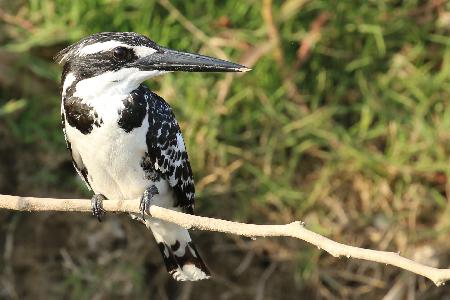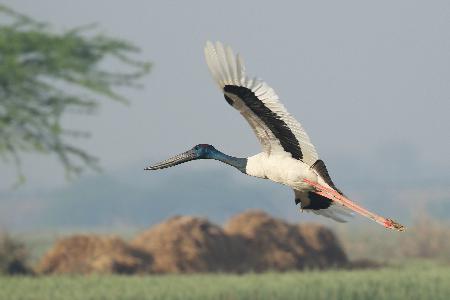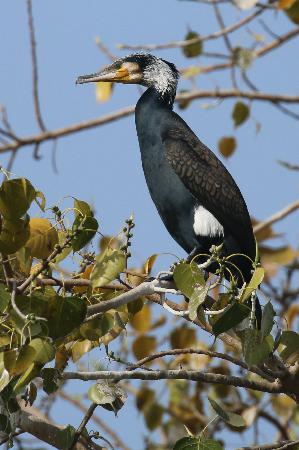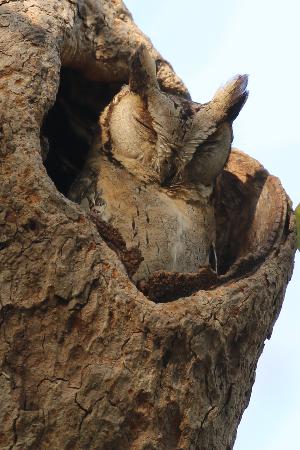It is said that the Chambal river was cursed by Draupadi on her way to heaven. Another legend has it that the river originated from the ritual sacrifice of a thousand cows. Whatever the reason, the Chambal river has thus been considered inauspicious, and as a result, despite flowing through one of the most densely populated regions of the world, looks pristine and is among the last refuges of several critically endangered species such as the Gharial, Gangetic Dolphin and the Indian Skimmer.
Chambal had been on my checklist for a while and we finally got to visit it this weekend. Not only the river, but the plains around are fantastic places for bird watching. It was also evident to me that Draupadi's curse only partly explains why this region, which has been continuously inhabited for millennia, is still host to such a rich range of fauna. The other reason, at least in my mind, is an under-appreciated spirit of coexistence that's been a hallmark of the culture of this land. Still, development is fast catching up in these places and I can see how while it brings prosperity for the human populations, it risks doing harm to the species that share this land with us. The trip left me wishing we do everything to preserve this beautiful land. It also left me wishing Draupadi had cursed a few more water bodies on her way out.
Chambal - 2021
Chambal River
Our first trip was a boat ride in the Chambal river flowing within what has recently been anointed the National Chambal Sanctuary.
Indian Skimmer (Rynchops albicollis)
My first sighting of this species with its incredible adaptation; the lower bill is substantially longer than its upper one. Only a few thousand of these are said to be left in the wild. The preservation of the Chambal ecosystem may be key to their survival.

After a lot of flirting and cavorting this pair of Indian Skimmers settled down for the business end of their courtship, while a pair of spoonbills ensured I wasn't the only one prying.

Temminck's Stint (Calidris temminckii)
The other lifer for me at Chambal. If it weren't for our excellent guide I probably would have mistaken this for a Little Stint.

Bar-headed Goose (Anser indicus)
It's awe-inspiring to consider that this pair of Bar-headed Geese made it here to Central India after an epic flight over the Himalayas. They'll stay here a few more weeks before heading back to their summer grounds in the steppes

Small Pratincole (Glareola lactea)
There was a beautiful sunset happening behind me, but I missed nothing, because this Small Pratincole let me get so close to it that I could see the sunset reflected in its eye.

Great Thick-knee (Esacus recurvirostris)
Great Thick-knees are remarkably bold birds. Even as our boat floated towards them they stood their ground and stared right back.

Common Spoonbill (Platalea leucorodia)
This pair of Eurasian Spoonbills are either slipping into our out of the breeding plumage, as you can tell from the colouration on the neck and on the bill.
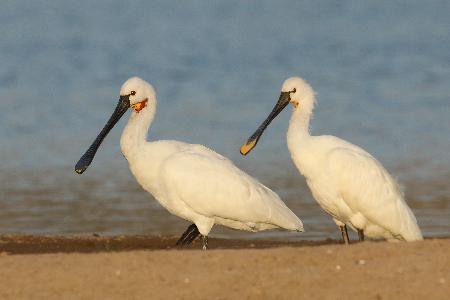
Long-legged Buzzard (Buteo rufinus)
A Long-legged Buzzard surveying its options for the next hunt from the river bank.

Fields near Saifai
On the second day of our stay we travelled to a village called Saifai, and roamed in the fields around in search of Sarus Cranes. This area is also irrigated by a network of canals, all of which are excellent hotspots for birding.
Tawny Eagle (Aquila rapax)
Yet another lifer for me. This Tawny Eagle was feasting on a carrion, perhaps of cattle.

Sarus Crane (Grus antigone)
In the fields of western UP where we roamed, I'm happy to report, Sarus Cranes outnumbered scarecrows 3:1.

At the lodge
The lodge where we stayed was itself an excellent habitat for birds.




